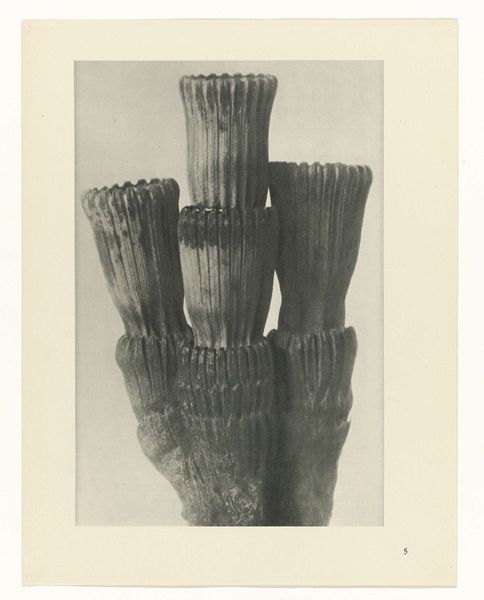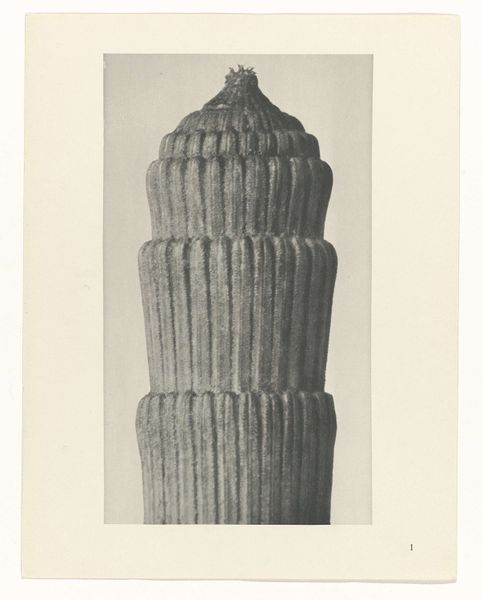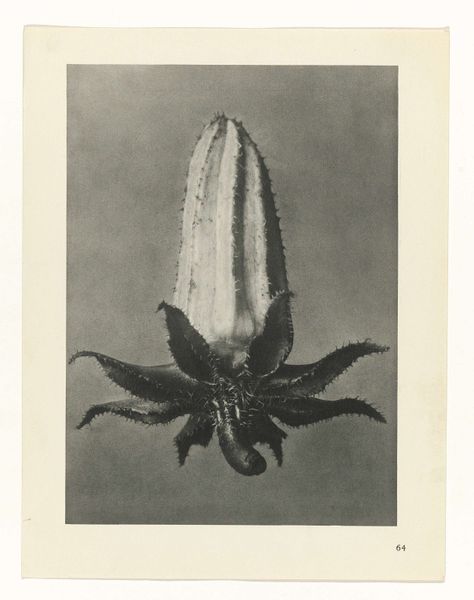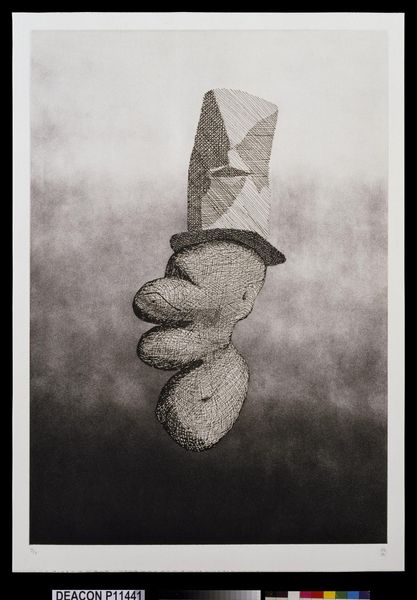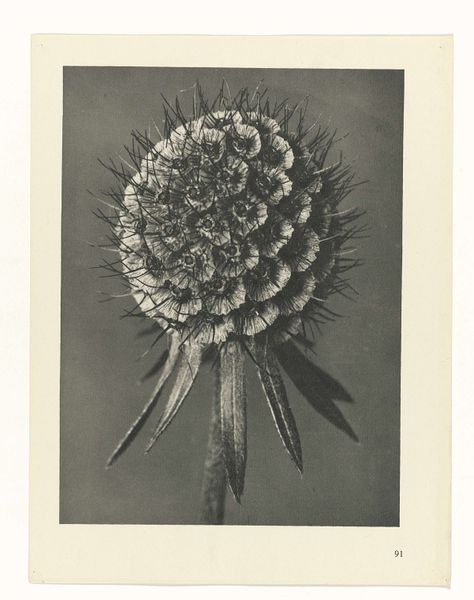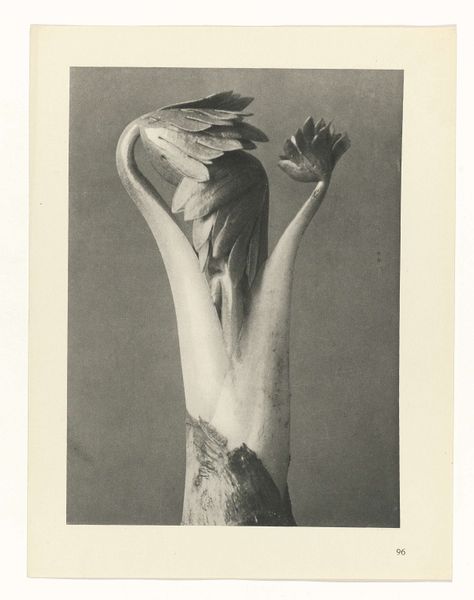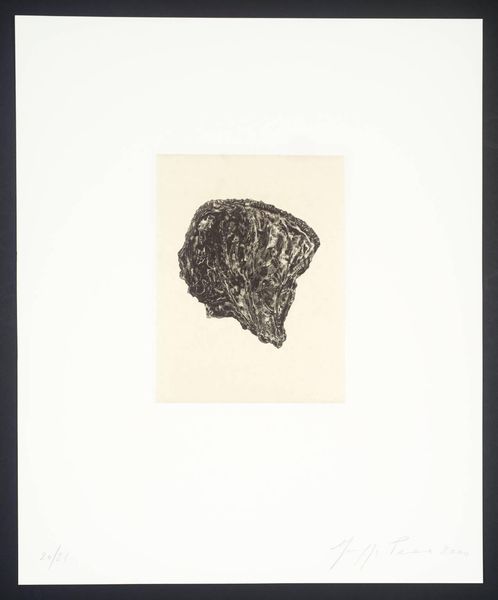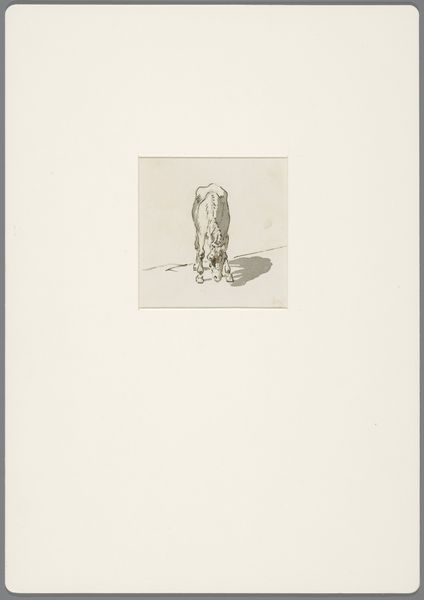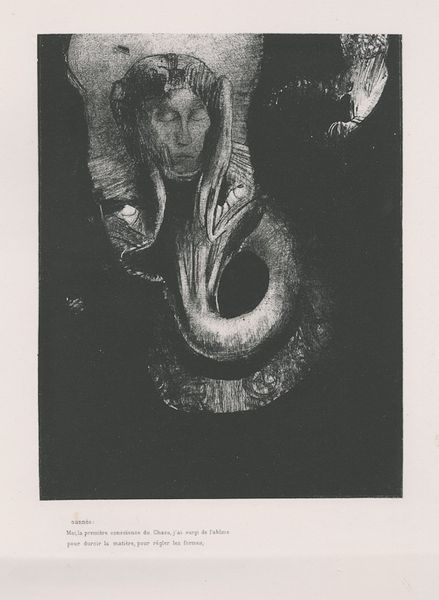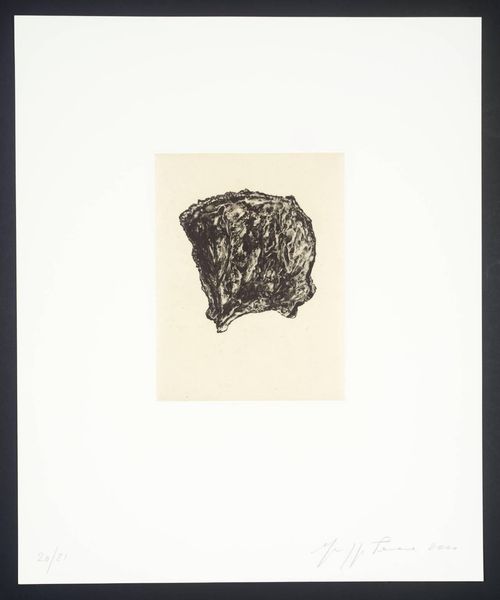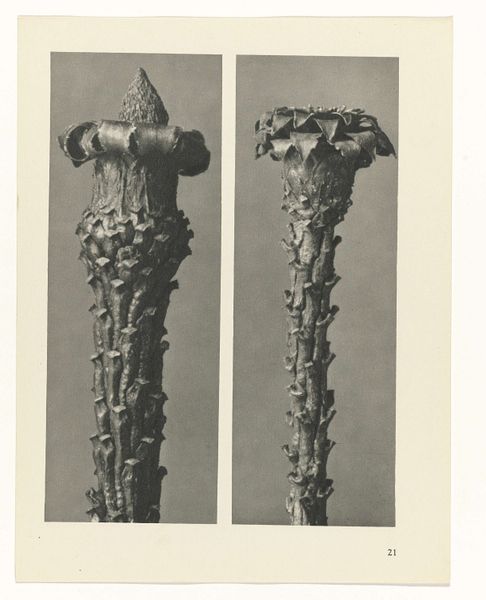![['Plant Studies', 'Urformen der Kunst: photographische Pflanzenbilder'] by Karl Blossfeldt](/_next/image?url=https%3A%2F%2Fd2w8kbdekdi1gv.cloudfront.net%2FeyJidWNrZXQiOiAiYXJ0ZXJhLWltYWdlcy1idWNrZXQiLCAia2V5IjogImFydHdvcmtzL2U0OTAxNzA0LWUyMGYtNGEwMS04MThiLThkMWI1NjQ1ODY2Zi9lNDkwMTcwNC1lMjBmLTRhMDEtODE4Yi04ZDFiNTY0NTg2NmZfZnVsbC5qcGciLCAiZWRpdHMiOiB7InJlc2l6ZSI6IHsid2lkdGgiOiAxOTIwLCAiaGVpZ2h0IjogMTkyMCwgImZpdCI6ICJpbnNpZGUifX19&w=3840&q=75)
['Plant Studies', 'Urformen der Kunst: photographische Pflanzenbilder'] 1928
0:00
0:00
Dimensions: height 312 mm, width 242 mm
Copyright: Rijks Museum: Open Domain
Curator: Standing before us is a gelatin silver print by Karl Blossfeldt, dating back to 1928. It's part of his renowned "Urformen der Kunst: photographische Pflanzenbilder" series, which translates to "Art Forms in Nature: Photographic Plant Images". Editor: It looks like some kind of alien artifact, all bristly and symmetrical. There’s something deeply unsettling, yet compelling, about it. The black and white tones make it feel… timeless, almost archaic. Curator: Blossfeldt dedicated his practice to revealing the underlying architectural forms he saw within the natural world. He challenged the perceived hierarchy between nature and art, questioning traditional notions of beauty and aesthetics. He wanted to show how nature mirrored artistic and architectural form. Editor: The geometry is striking – the way he captures the spiraling patterns, the repetition of forms. This resonates with ancient symbols, especially mandalas that explore themes of the microcosm and macrocosm, echoing the structure of the universe within a single form. The repetitive aspect hints at the cyclical nature of existence. Curator: Precisely! Blossfeldt photographed plant specimens with the intention to educate artists, designers, and architects. However, the images have an arresting, strange, and austere quality that transcends a purely scientific record. He offers a compelling view on the intersections between art, science, and technology during the early 20th century. It's worth discussing the cultural context and its links to the New Objectivity movement... Editor: I'm struck by the plant's anthropomorphic qualities; it feels like it is staring back at us. Consider how the light is used to define its texture. This isn't just about documenting nature but lending a sense of character and being to the specimen itself. It feels quite intentional. Curator: He used a homemade camera to magnify the specimens, eliminating the surrounding context to focus on form. In doing so, he exposed unseen symmetries and abstract design elements typically overlooked. And you’re right, in isolating these qualities he gave agency to the plant itself. Editor: Considering our present time and culture, Blossfeldt's image can push our contemporary ecological narratives, especially regarding our alienation from nature. Curator: This plant form resonates beyond botanical interest, offering insights into how we engage with the environment. A beautiful work from a period grappling with radical cultural and technological change. Editor: An image carrying both echoes of the ancient past and perhaps premonitions of the future, all in a plant.
Comments
No comments
Be the first to comment and join the conversation on the ultimate creative platform.
